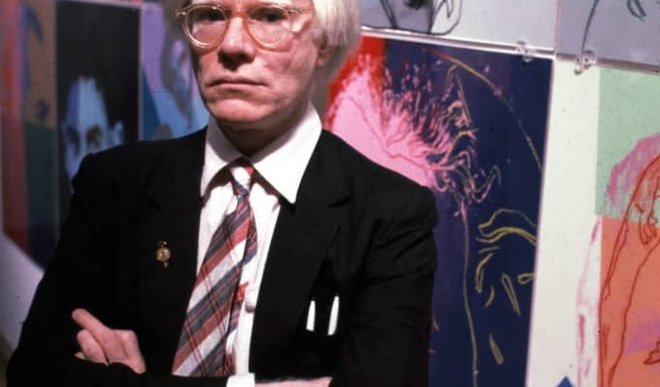November 12 – The Whitney Museum of American art opened the most significant Andy Warhol retrospective in almost 30 years. A fantastic opportunity for the new generation of Americans to get to know the work of one of the most iconic artists of the 20th century… well, at least for those who love art. “From A to B and Back Again,” is the title of the retrospective, which allows us to take a look at Warhol’s career and to investigate his relevance in today’s world. Besides these obvious reasons for organizing such an exhibit, there might exist others that explain why it is happening precisely at this time.
After setting the record of $568.7 million in 2014, the sales of Warhol’s works dipped significantly. To be accurate, the total price of his pieces sold during 2017 was 59% less than three years before. Art dealers and auction houses are convinced that this is just a temporary drift and that the interest in Warhol remains strong no matter how the sales are proceeding.
Nevertheless, we are talking about millions of dollars! And since such huge amounts are at stake, perhaps it’s about time to motivate people to put money back in Warhol’s opus again? Coinciding museum retrospectives alongside main auction houses’ sale strategies to entice those uber wealthy art patrons, have long been not-so secret art world modus operandi, a well oiled industry machinery behind some of the careers of the most successful artists of our time.
Speaking of alluring buyers, out of all artists in the history, Andy Warhol was probably the best at recognizing the right opportunity, presenting his work to people, and convincing them to either help him or buy from him. He liked to call himself a business artist. So then – would it be safe to say that the effect of the Whitney retrospective might have perfectly matched Warhol’s character and his legendary approach to the business of art?

A Commercial Illustrator Who Critiqued and Desired Wealth at the Same Time
After receiving formal training in pictorial design at the Carnegie Institute of Technology, the Pittsburgh native, Andy Warhol, moved to New York where he started a commercial illustrator’s career. He quickly reached success in this field, working for renowned magazines, such as Vogue, Harper’s Bazaar, and The New Yorker. His appetite for glamour, money, and brand-named products was one of his main traits, which compelled him to move on from designing advertisements for women’s shoes to bigger things. Warhol wanted to become an artist of his own. His experience and proficiency in commercial art combined with his interest in the popular culture defined his creative path and quickly brought him the audience the artist yearned for, for so long.
From the beginning, Warhol intended to express his opinion on the American consumerism and desire for wealth. He wanted to make his paintings emotionless and raw. To do that Warhol tried to eliminate the element of a brush stroke and used well-known motives from everyday life. Eventually, Warhol screen-printed images of soup cans, newspaper stories, celebrities, Coca-Cola bottles, and made a new way of expression, called Pop art. Turning the everyday into art (as opposed to elitist subjects), Warhol quickly earned a significant fan base and started making a profit out of his art.
Andy Warhol, the Entrepreneur
The moment he earned enough money, Warhol hired assistants who would do the majority of the work following his directives. This step, along with the application of a print screening technique allowed him to mass produce images. He distanced his hand from the canvas even more and manufactured art that seemed meaningless and empty, questioning the meaning of art altogether. Since he didn’t have to do all the work on his own, he gradually grew more into the role of a boss of The Factory, distancing himself from the role of an artist, which was atypical for the art world of the time.
While his employees materialized Warhol’s ideas, he could dedicate himself to other things. He developed new ideas (he produced over 300 films), made contacts, and built his image of a celebrity. Warhol was changing the perception of what art was and what being an artist meant – and he loved it. Presenting everyday objects as valuable pieces of information while also defining himself and his methods as pieces of art in their own right. It’s safe to say Warhol was the first influencer of them all. If only there were Instagram back then!

Artist, Businessman, or Both?
“Being good in business is the most fascinating kind of art,” said Warhol. “Making money is art, and working is art, and good business is the best art.” He loved money, but we knew that already. Many critics didn’t hesitate to call him a whore when he started doing commissioned portraits of celebrities. But the portrait of Mao Zedong he made right after Richard Nixon’s visit to China says a lot about his timing and irony he very cunningly filtered through his pieces.
That Warhol did have a neck for business goes without saying. However, saying his work was strictly money-motivated would be an oversimplification of Warhol’s achievement and his artistic expressions that have been seducing the masses ever since. The perfume he designed, named “You’re in” (try reading the name out loud) or his 25-hour long film are way more than money makers and more of statement works of the time. Still, there were, and still are, people that believe Warhol was just a manipulator who wanted to become famous and rich, and he used art to achieve his goals.
Mostly, the romantic comprehension of an artist is always stripped of money or any material value. An artist is considered uncorrupted only if they create out of idealism or suffering. Unfortunately, everyone knows this portrayal is unreal and idealized. Like anyone else, artists as well do have grumbling stomachs and bills to pay, making their attempts to find ways to earn from their work legitimate and necessary.
Majority of relevant artists from any era had “sponsors” (Latin: mecenas) who financed their art, or they knew how to handle their art as a business. It has always been crucial to understanding how to approach audiences, especially in modern, media-driven world. As long as the art has value and speaks to people, there is nothing wrong with adding an entrepreneurial approach to it.

Andy Warhol was the first who recognized the significance of popularity and money in art. At the same time, he perfectly presented the world through his work, leaving many people astonished and confused by his ways. He embraced wealth and fame and defined the meaning of being an artist of the modern era. From today’s media saturated environment and never-ending self-obsessional perfectionism, Warhol’s singular celebrity status and his iconic works remain as ubiquitous and relevant as ever. They continue to be tremendously influential and pervasive on popular culture at large and to the artists of the current time. The fact that Andy Warhol could understand the world so well and his ever-relevant legacy to this day makes him not just a great artist and businessman, but a visionary like none other.


![[Left] Kusama with her piece Dots Obsession, 2012, via AWARE, [Right] Yayoi Kusama (Courtesy Whitney Museum of American Art) | Source: thecollector.com](https://www.artdex.com/wp-content/uploads/2024/04/Left-Kusama-with-her-piece-Dots-Obsession-2012-via-AWARE-Right-Yayoi-Kusama-Courtesy-Whitney-Museum-of-American-Art-Source-thecollector.com--300x172.png)




